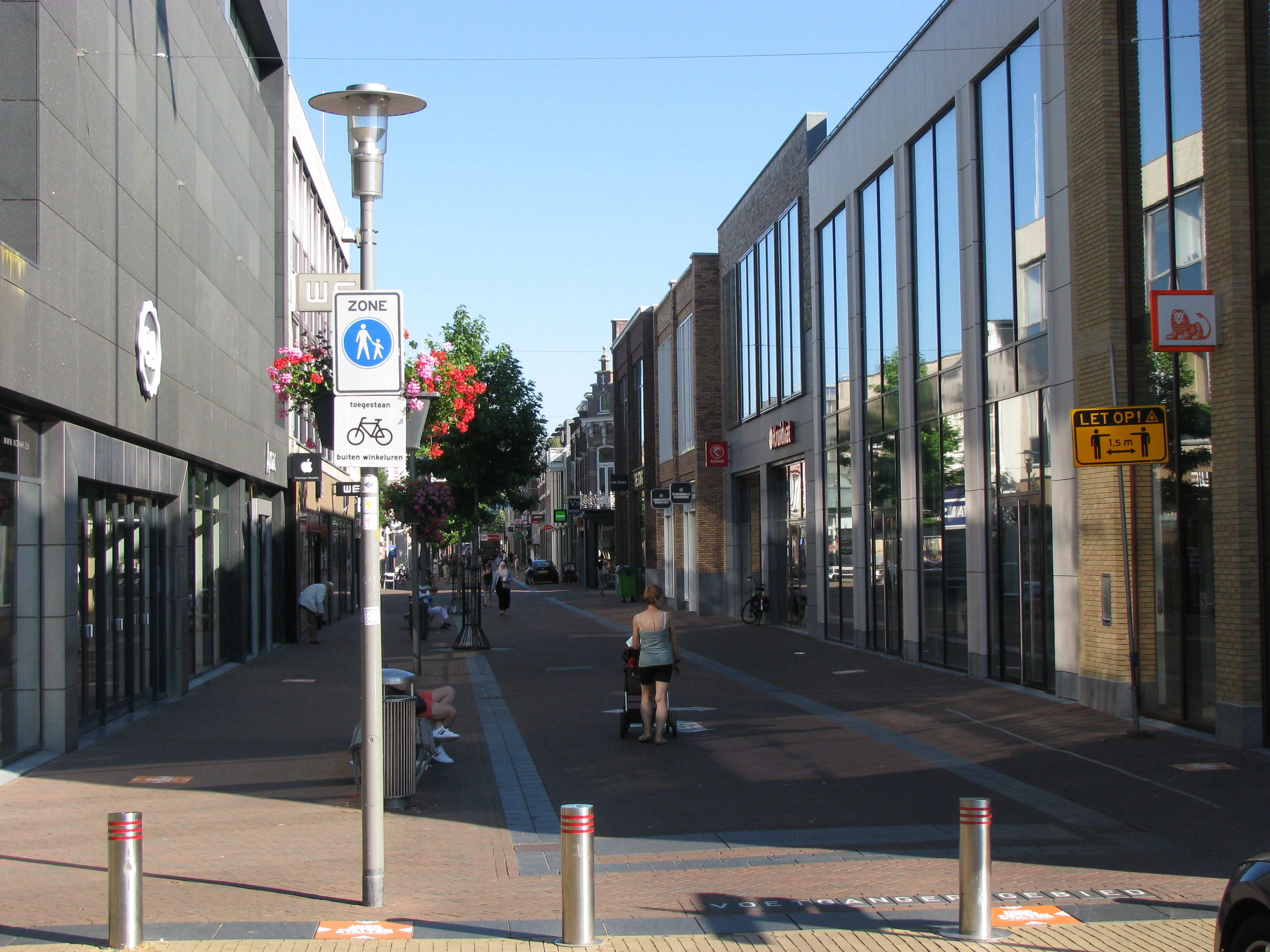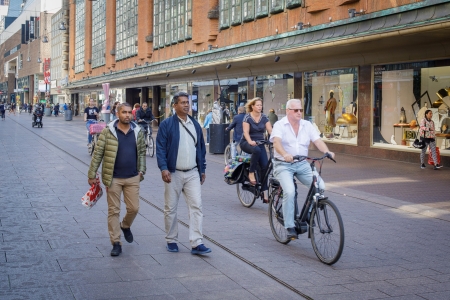A pedestrian precinct is an area that uses physical barriers and signage to exclusively reserve access to pedestrians, and sometimes to cyclists and loading/unloading traffic. Research into the road safety effects of pedestrian precincts dates back several decades. It suggests that road safety in and around pedestrian precincts improves because the number of conflicts between pedestrians and motor vehicles decreases [18]. Shopping streets often have a lot of side streets from which (motorised) traffic may exit and trucks and delivery vans restrict the visibility of pedestrians during loading and unloading. Establishing pedestrian precincts will prevent those problems.
Behavioural observations (speed differences and conflicts) by Fietsberaad (Knowledge centre for cycling policy of the Dutch governments) [3], suggest that cycling in pedestrian precincts is safe and practicable, provided the number of pedestrians per hour per metre of profile width is restricted to 100. At 100 to 200 pedestrians per hour per metre of profile width, a ‘segmented profile’ (with a separate strip for cyclists) is advisable, and at a density above 200, joint use of the area is unadvisable. For the number of cyclists, no critical limit has been set. Studies from Germany and the UK correspond to the Dutch findings by Fietsberaad [31] [32].
 Figure 7. Entry to the pedestrian precinct in the city of Apeldoorn (Photograph: Paul Schepers).
Figure 7. Entry to the pedestrian precinct in the city of Apeldoorn (Photograph: Paul Schepers).
